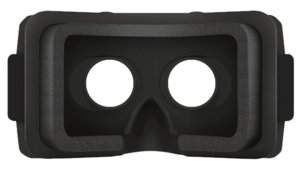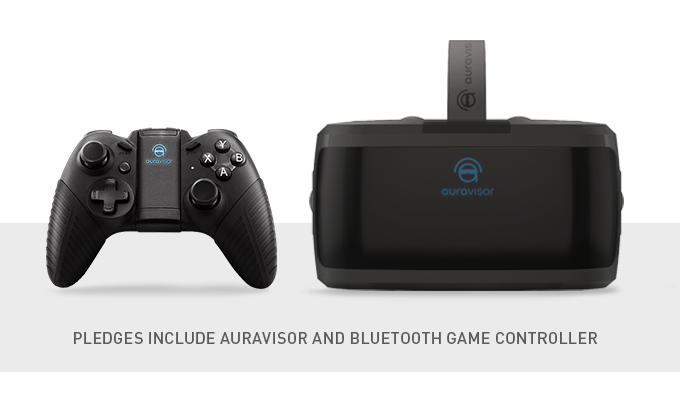AuraVisor Promises Wireless VR Headset, Kickstarter Successfully Funded With Three Weeks To Spare
The AuraVisor is a new VR HMD that promises a fully untethered experience without relying on the use of your smartphone. The company said the AuraVisor features a fully integrated Android computer that is focused on graphics processing rather than being required to share resources with other functions like a smartphone does. Because the AuraVisor is a standalone device that doesn't require the use of a smartphone or computer to view content, it simply needs to be charged, and then it's ready to go out of the box.
The AuraVisor features a 5-inch 1080p TFT backlit display, which the company said may get upgraded to an OLED display to conserve battery power if there are enough backers, but it didn't say at which funding level this would happen. AuraVisor said the headset offers a 100-degree FOV.
The headset features Wi-Fi for downloading content and Bluetooth for connecting a gamepad, which AuraVisor is including with every headset purchased. The headset runs Android OS, and AuraVisor has integrated a VR Store to purchase and download other apps. The VR store runs over the top of, and integrates into, the Google Play Store. AuraVisor said the headset is compatible with all VR content found on the store.
The AuraVisor features some built-in control buttons on the bottom of the headset. There are Select and Reset buttons, a 4-way directional rocker, the menu button, power button and volume controls. Here you'll also find an SD card slot for expanding the available storage. On the left side of the AuraVisor, you'll find a dial that adjusts the focus.
The AuraVisor has been designed so that you don't need to wear glasses with it. The lenses can be adjusted forward and back, as well as towards or away from the nose. AuraVisor said that these adjustments should accommodate nearly everyone who requires corrective glasses.


The headset also features the ability to interchange faceplates (not the outside, but the part that touches your face) to accommodate both children and adults. AuraVision said it could be possible to create a faceplate that will allow for glasses to be worn, but it is not currently offering this option.
A lithium ion battery powers the AuraVisor headset, and the company claimed that gameplay would net close to three hours of use; the battery life increases to five hours if you're watching films.
Get Tom's Hardware's best news and in-depth reviews, straight to your inbox.
Despite being billed as a wireless VR HMD, the AuraVisor isn't strictly a mobile device. The company included an HDMI port on the headset that will allow you to connect it to a computer or a console. These options treat the headset as a standard display, but the company said it is actively working on a head tracking solution for these two use cases.
AuraVision was seeking £100,000 in order to bring the product to market. With 21 days left to go on the Kickstarter campaign, the company has already exceeded this goal. The earliest backers should receive their headsets in February, and the rest will be rolled out by May if all goes according to plan. Pledges start at £135 ($202), but everything cheaper than £175 ($263) is already sold out. Even at £175, less than 140 remain.
Follow Kevin Carbotte @pumcypuhoy. Follow us on Facebook, Google+, RSS, Twitter and YouTube.
Kevin Carbotte is a contributing writer for Tom's Hardware who primarily covers VR and AR hardware. He has been writing for us for more than four years.
-
Cazalan At that price they couldn't be spending more than $100 on the phone. This is going to look like complete crap compared to the other VR solutions.Reply


